299. Once again.
The beginning of glyph line Ga4
has a giant (Herculean) person
in full figure. Once I did
compare Ga4-1 with all the other
tagata figures in the
text and he is indeed slightly
greater.

At the time of
Bharani his position had been
107 right ascension days after
0h. This number was equal to 16 *
29½ - 365 and for instance also
equal to 80 (the Gregorian March
equinox) + 27 (the precessional
distance down to Roman times
(when the First Point of Aries
had been at 0h). Side a on the C
tablet carries 365 + 27 = 392 glyphs
(right ascension days) and ends
at Polaris. Side b begins with
heliacal Sheratan.
If the kuhane had moved
in the night at the time when
Hyadum II had been - according
to a linear extrapolation back
in time - at 0h, then this
great person in Ga4-1 would have been positioned
84 right ascension days after
0h (= 80 days after day 84), i.e. at the northern head of
the Lion (Ras El Aset
Borealis) with the Full Moon
positioned at
Poko Uri (DECEMBER 13). The kuhane
(flying spirit of the sleeping
Sun person Hau Maka in Hiva)
had here reached the mainland
of Easter Island, and with the
Head (puoko) of the Lion
up in the north the proper
place on Easter
Island should be
Rano Kau (Kao).

|
Puoko.
1. Head;
tagata puoko hiohio,
hard-headed,
opinionated person. 2.
Skull (also: pakahera
puoko). Vanaga.
Head,
skull, crown of a hat;
puoko garuru,
headache; kiri puoko,
scalp. T. Mgv.: upoko,
head (men or animals).
Mq.: upoko,
upoó, head. Ta.:
upoó, human head.
(Sa.: ulupo'o,
skull. To.: uluboko,
id. Niuē:
ulupoko,
id.) Churchill. |
|
Poko.
1.
Fragrant; to smell, to
give off a smell:
he-poko te eo, it
gives off a pleasant
smell. 2. To hunt, to
catch with a trap, to
snare. He-kî e Tori:
maaku-á e-ea ki te manu,
e-poko i te po i ruga i
te opata. Tori said:
I shall go and catch
birds at night, up on
the cliff. 3. Thunder
(also hatutiri).
4. (Also: pokopoko.)
Hollow, hole,
depression, any deep,
concave object; to leave
in a hole, in a
depression. Pokoga,
chasm; summit.
Pokohata, female
rat: kio'e pokohata.
Pokopoko, woman bent
under the weight of her
years: vî'e pokopoko.
Vanaga. 1. Sound of the
sea; tai poko,
breakers. Pokopoko,
to slap water. Mgv.:
pokokina, resonant,
clear-toned. Mq.:
poko, to slap the
water in imitation of
drumming; pokokina,
sound of water. 2. Rut,
beaten path. P Pau.:
poko, hollow;
pokopoko, concave,
to excavate. Mgv.:
poko, to dig, to
excavate, to hollow out.
Mq.: pokoko, to
crack open; pokona,
to hollow out, to
excavate. Ta.: poópoó,
hollow, deep. 3.
Infernal; pokoga,
hell, infernal cave;
topa ki te pokoga,
to damn (lit: to go down
to hell.) Mq.: pokona,
cavity, hole. Churchill.
Pokopoko: 1.
Womb. PS Sa.:
po'opo'o, clitoris.
Mq.: pokopoko,
pudendum muliebre. 2.
Pokopoko vae,
footprints. 3. Concave,
deep, ditch, mysterious;
pokopoko ihu,
nostril (Ta.: poópoó
ihu); pokopoko
ke, fathomless;
pokopoko
taheta, concave.
Hakapokopoko, to
deepen. Chuchill. |
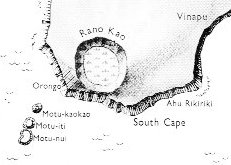
On Easter Island all the (male)
stone statues were 'brought
alive' in the east at the dry
Rano Raraku, at the
longitude of Tama:
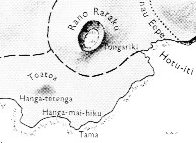
... Métraux quotes a Rapa Nui
legend in which carvers from
Hotu Iti (eastern sector)
journeyed to the western sector
to seek the advice of a master
carver. They were perplexed
about how to resolve the
difficult problem of carving the
statue neck. He advised them to
seek the answer by viewing their
own bodies. They did so, and
discovered that the model for
the statue neck was the penis (ure)
...
The majority of the Polynesian
band of islands were close to
the equator and therefore people
would have perceived time following
longitudes rather than
latitudes:
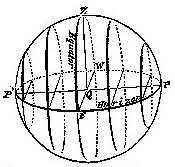 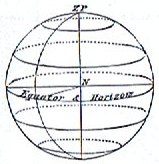
...
I have read somewhere (possibly
in Needham's Science and
Civilisation in China) that
when the Europeans tried to
introduce their superior mills
in China they failed. The
Chinese kept to their
traditional models with
horizontal shafts and they could
not accept the European vertical
shaft.
I think the
reason was the Chinese system of
correspondendes. Everyone could
see how the stars in the sky
were revolving as if in a mill
with a horizontal shaft - mills
in general had to be constructed
like that, to do otherwise would
be an offense to Mother Nature
...
|
JUNE 13 (*84) |
14 |
15 |
16 |
17 (168 = 2 * 84) |
18 |
19 (*90) |
 |
 |
 |
 |
 |
 |
 |
|
Ga4-1 (68 + 16) |
Ga4-2 |
Ga4-3 |
Ga4-4 |
Ga4-5 (88) |
Ga4-6 |
Ga4-7 |
|
υ¹ Hydrae (148.4), RAS
ELASET BOREALIS
(Northern Head of the
Lion) = μ Leonis (148.7)
*107 = *148.4 - *41.4 |
TSEEN KE (Heaven's
Record) = φ Velorum
(149.9) |
ν Leonis (150.1), π
Leonis (150.6) |
υ² Hydrae (151.8) |
Al Jabhah-8 (Forehead) /
Maghā-10 (Bountiful) /
Sharru-14 (King)
10h (152.2)
AL JABHAH = η Leonis
(152.4), REGULUS (Little
King) = α Leonis (152.7)
*111 = *152.4 - *41.4 |
λ Hydrae (153.2) |
ADHAFERA (Forehead) = ζ
Leonis, TANIA BOREALIS =
λ Ursae Majoris, SIMIRAM
= ω Carinae (154.7) |
|
Aug 16 (*148) |
17 (229) |
18 |
19 |
20 (*152) |
21 |
22 |
|
°Aug 12 (*144) |
13 (225) |
14 |
15 |
16 (*148) |
17 |
18 |
|
'July 20 (*121) |
21 |
22 / 7 |
23 |
24 (*125) |
25 |
26 |
|
"July 6 (*107) |
7 |
8 |
9 |
Anakena 10
2nd Te Pou |
11 |
12 (193) |
|
2nd
time at Hanga Te Pau |
|
... He got up, the path
went uphill, and he came
(back) to the house. It
was dark when he reached
the house. When he came
to the yam plantation of
Kuukuu, he sat
down. Night was falling.
Ira
asked Makoi the
following question: 'How
did you fare when you
wandered, when you went
searching, when you
found yourself on the
path of the dream soul
of the father?' Makoi
replied, 'There are
indeed all those places.
I did not forget them at
all (? kai viri kai
viri) when I saw
them (text corrected,
i-ui-nei). I alone
saw no fewer than four
of my [sic!] places, and
I returned here only
because night was
falling.'
Then Ira spoke
again: 'How did you name
them, last-born?'
Makoi replied, 'This
is what happened, this
is how I gave the names.
I wrote (ta)
Te Manavai A Hau Maka
on the surface of a
banana leaf (kaka),
and this is how I left
it.' This is how
Makoi remembered it.
No sooner had he said
this, when Ira
gew angry and quarrelled
with Makoi. He
said the following (to
him): 'You did not pay
attention, last-born,
and you did not give the
(full) name. This is how
it should be: the
Manavai of Hau Maka of
Hiva,
in memory (mo aringa
ora) of the father,
of his dream soul.'
Makoi
replied, 'In Hiva
the land belongs to him
- this land here is
mine, not his!' [E:21]
They
stayed (there longer).
On the fifth day of
the month of July (Anakena)
[day 227 at the time of
rongorongo], they all
got up, went downhill,
went on, and reached
Hanga Te Pau.
They took their
provisions with them,
carrying them on their
shoulders, went on, and
reached
Te Pou.
They made camp and slept
in
Te Pou on the
tenth of the month of
July (Anakena).
Then they all got up,
carried their provision
on their shoulders, went
straight ahead, and
followed the path of the
dream soul of Hau
Maka.
They came to
Hua Reva and
said, This is Hua
Reva A Hau Maka!
There
were *111 (Anakena 10)
- *81 (Hanga Te Pau)
= 30 right ascension
days from their Landfall
to 10h, from Ga2-28 (58)
to Ga4-5 (88). From
Landfall to the 2nd time
they reached Hanga Te
Pau there were 186 -
161 = 25 days,
suggesting Hanga Te
Pau was a dark
regenerativ time
belonging to Saturn. |
|
CLOSE TO THE FULL MOON: |
|
DEC 13 |
14 (*268) |
15 |
16 (350) |
17 |
18 |
19 |
|
POKO URI |
Te Manavai |
Te Kioe Uri |
Te Piringa Aniva |
Te Pei |
Te Pou |
Hua Reva |
|
KUH (Weeping) = μ
Capricorni
(331.4), γ Gruis (331.5)
*290 = *331.4 - *41.4 |
no star listed (332) |
η Piscis Austrini
(333.4)
*292 = *333.4 - *41.4 |
22h (334.8)
KAE UH (Roof) = ο Aquarii
(334.0),
AL
KURHAH (White Spot) = ξ Cephei
(334.4),
SADALMELIK (Lucky King)
= α Aquarii,
AL
DHANAB (The Tail) = λ Gruis
(334.6), ι Aquarii, ν
Pegasi (334.7)
*293 = *334.4 - *41.4 |
ι Pegasi (335.0),
ALNAIR
(The Bright One) = α Gruis
(335.1), μ Piscis
Austrini, υ Piscis
Austrini (335.3),
WOO (Pestle) = π Pegasi
(335.7),
BAHAM = θ Pegasi,
τ Piscis Austrini
(335.8) |
ζ Cephei (336.2), λ
Cephei (336.3), -/270
Lac. (336.7), λ Piscis
Austrini (336.8) |
μ Gruis (337.0), ε
Cephei (337.2), 1/325
Lac. (337.3),
ANCHA (Haunch) = θ Aquarii
(337.4), ψ Oct. (337.5),
α Tucanae (337.9) |
|
Febr 15 (2-15) |
16 |
17 (14 * 29½) |
18 (414) |
19 |
20 |
21 (52) |
|
°Febr 11 |
12 |
13 |
2-14 |
15 |
16 (*332) |
17 (413) |
|
'Jan 19 (384) |
20 |
21 |
22 |
23 (*308) |
24 |
25 |
|
"Jan 5 |
6 |
7 (372) |
8 |
9 |
10 (*295) |
11 |

.. Horapollo, the
grammarian of
Alexandria, about A.D.
400, tells us that the
crane was the symbol of
a star-observer in Egypt
... |
|
JUNE 20 (*91) |
SOLSTICE |
22 |
23 (174) |
 |
 |
 |
 |
|
Ga4-8 |
Ga4-9 (92) |
Ga4-10 |
Ga4-11
(Tama) |
|
ALGIEBA (The Mane) = γ Leonis, q
Carinae
(155.5) |
TANIA AUSTRALIS = μ
Ursae Majoris
(156.0),
GHOST OF JUPITER =
NGC3242 Hydrae
(156.8) |
Extended Net-26b (Ox)
μ Hydrae
(157.1) |
Maru-sha-arkat-Sharru-15
(4th Son behind the
King)
SHIR (Possessing
Luminous Rays) = ρ Leonis
(158.9) |
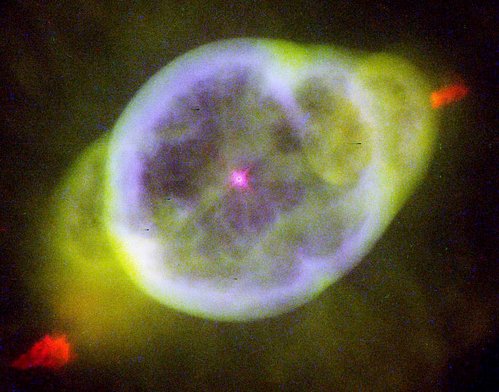 |
|
... Allen does not
mention Achird
and he has no other name
for
η
Cassiopeiae, but I guess
the star could be
connected with
α
Leonis, Regulus, once
named Achir
(Possessing Luminous
Rays):
Naturally sharing the
character of its
constellation as the
Domicilium Solia, in
Euphratean astronomy it
was Gus-ba-ra,
the Flame, or the Red
Fire, of the House of
the East; in Khorasmia,
Achir, Possessing
Luminous Rays; and
throughout classical
days the supposed cause
of the summer's heat, a
reputation that it
shared with the Dog-star
... |
|
Aug 23 |
24 (4 * 59) |
25 (*157 = *471 / 3)) |
26 |
|
°Aug 19 |
20 (232) |
21 (*153) |
22 |
|
'July 27 (*128) |
28 |
29 (210) |
30 |
|
"July 13 |
14 |
15 (*116 = *348 / 3) |
16 |
|
They went on and reached
Akahanga, took a
look at it and looked
around. They said: This
is it! and gave the name
Akahanga A Hau Maka. They went
on and came to
Hatinga Te Kohe
(Sic!) and
saw that in this place
the kohe plant
had been broken. They
all said, Here it is,
the kohe plant,
troop of young men! This
kohe plant had been
broken by the feet of
the dream soul and
therefore they gave the
name Hatinga Te Kohe
A Hau Maka.
They went
on and came to Roto
Iri Are. Again they
said, Here it is,
Roto Iri Are and
named the place Roto
Iri Are A Hau Maka.
They went on and reached
Tama. They looked around
and said, This is
Tama. They gave the
name 'Tama, an
evil fish (he ika
kino), a very long
nose (He ihu roroa).' |
|
CLOSE TO THE FULL MOON: |
|
DEC 20 (354) |
SOLSTICE (*275) |
22 |
23 |
|
Akahanga |
Hatinga Te Kohe |
Roto Ire Are |
Tama |
|
Al Sa'ad al Ahbiyah-23 /
Shatabisha-25
ε Oct. (338.1), ρ
Aquarii (338.2), 2/365
Lac. (338.5),
SADACHBIA (Lucky Star of
Hidden Things)
= γ Aquarii
(338.6), π Gruis (338.9) |
β/172 Lac. (339.2),
4/1100 Lac. (339.4), π
Aquarii (339.5)
CASTOR (α Gemini)
*298 = *339.4 - *41.4 |
δ Tucanae (340.1), ρ
Cephei (340.2), ν Gruis
(340.3), ζ Aquarii, δ
Gruis (340.4), 5/1100
Lac. (340.7), σ Aquarii,
6/650 Lac. (340.9)
PROCYON (α Canis
Minoris)
*299 = *340.4 - *41.4 |
υ Oct. (341.0), α/91
Lac. (341.1),
HOMAN (Hero) = ζ Pegasi,
β Piscis Austrini
(341.2), ν Tucanae
(341.5), υ Aquarii
(341.9) |
|
Febr 22 (53) |
TERMINALIA |
24 (*340) |
25 |
|
°Febr 18 |
19 (50) |
20 (*336) |
21 |
|
'Jan 26 |
27 (392) |
28 |
29 (*314) |
|
"Jan 12 |
13 (378) |
14 |
15 (*300) |
|
"The
quarternary system,
which divides the island
into four quadrants,
correlates the four
royal sons with the path
of the sun as it circles
the island
counterclockwise. The
sequence of the sons is
determined by their
order of birth. To the
first-born goes the
region in which the noon
sun reaches its zenith,
a striking symbol for
the highest ranking son;
to the second-born goes
the region of the
setting sun. The name
Miru may have been
connected with the
central Polynesian
concept of a region of
the dead to the west and
its guardian. The third
son inheriths the
mid-night region, and
the last-born inherits
the eastern section.
Since the last-born, 'a
good and strong child' (poki
rivariva, poki hiohio),
was closest to the
father, the region of
the rising sun is
alotted to him, which
gives this region
special value. While the
successor of the king is
like 'the sun at his
highest point', the
youngest son is like
'the rising sun' ..." (The
Eighth Island) |
|
Poki.
Son,
daughter; in wider
sense: nephew, niece,
child in general.
Poki atariki, eldest
child, first-born;
poki hagupotu,
youngest child; poki
hâgai, adopted
child. Vanaga.
Child,
infant, nephew,
grandchild, posterity,
progeny, race; topa
te poki, to lie in;
poki aana,
legitimate; poki
gaapu, abortion;
poki itiiti, child;
poki puepue,
abortion; poki
tamaahine, girl;
poki tamaroa, boy;
poki titika,
legitimate; poki
tuahuri; abortion.
Churchill. |
|
ST JOHN'S DAY |
6-25
→ 5 * 5 * 5 * 5 |
26 (177 = 6 * 29 ½) |
JUNE
27 |
 |
 |
 |
 |
|
Ga4-12 (95) |
413 = 14 * 29½ |
Ga4-14 |
Ga4-15 |
|
p Carinae (159.3) |
φ Hydrae (160.3) |
no star listed (161) |
VATHORZ POSTERIOR = θ
Carinae
(162.1),
PEREGRINI = μ Velorum,
η Carinae (162.6) |
|
Aug 27 |
28 (240 = 8 * 30) |
29 (*161) |
30 |
|
°Aug 23 |
24 (236 = 8 * 29½) |
25 (*157 = 314 / 2) |
26 |
|
'July 31 |
'Aug 1 |
2 (214) |
3 (*365 + *135) |
|
"July 17 |
Anakena 18
HANGA
TAKAURE
(7
days) |
19 (200) |
20 (*121) |
|
Again
they went on and came to
One Tea. They saw
it, looked around, and
gave the name One Tea
A Hau Maka. Then
they went on and came to
Hanga Takaure.
They gave the name
Hanga Takaure A Hau Maka.
They made camp and
rested at the Bay of
Flies for a week (etahi
pohitu).
On the
eighteenth day of the
month of July (Anakena),
they went on from
Hanga Takaure. They
climbed uphill, went on,
and reached Poike.
When they arrived, they
looked around and named
(the place) Poike A
Hau Maka. They
climbed up farther to
Pua Katiki. When
they arrived there, they
looked around and named
(the place) Pua
Katiki A Hau Maka
...
Possibly
they had to stay for a
week at Hanga Takaure
and for 5 days in
Hanga Hoonu because
366 = 354 (= 12 * 29½) +
12 and the kuhane
calendar was heliacal,
followed the Sun.
Similarly the canoe of
the Queen threatened to
come to early:
... The men on board the
royal canoe looked out
from Varinga Te
Toremo (the
northeastern cape of the
Poike peninsula).
Then they saw the canoe
of the queen, the canoe
of Ava Rei Pua,
as it reached Papa Te
Kena (on the
northern shore, east of
Hanga Oteo).
Honga came and gazed
in the direction below
(i.e., toward the west).
He called out to the
noteworthy ruler (?
ariki motongi)
Hotu: 'There is the
canoe of the queen! It
will be the first one to
land!' At this news King
Hotu replied to
Honga, 'Recite (rutu)
('powerful
incantations') as though
the ten brothers of the
chief (ariki
maahu) were one
whole (?).' The ten
recited with all their
might. This is what they
recited: 'Let all
movement (?
konekone) cease!'
They recited and sailed
on swiftly: Honga,
Te Kena, Nuku
Kehu, Nga Vavai,
Oti, Tive
(corrected for 'Sive'),
Ngehu, Hatu,
Tuki, and Pu
(corrected for 'Bu').
He worked mana in
the fishing grounds ...
[E:80 → 0h, 354 + 10 =
364.] |
|
CLOSE TO THE FULL MOON: |
|
CHRISTMAS EVE |
DEC 25 |
26 (360) |
27 |
|
One Tea |
HANGA TAKAURE |
Poike |
Pua Katiki |
|
η Aquarii (342.1), σ
Gruis (340.4),
SITULA (Water-jar) = κ
Aquarii
(342.7)
*301 = *342.4 - *41.4 |
ε Piscis Austrini
(343.5), ο Pegasi, β
Gruis (343.8) |
ρ Gruis (344.0),
MATAR (Fortunate Rain) =
η Pegasi (344.2),
η Gruis (344.6), β Oct.
(344.7) |
λ Pegasi (345.0), ξ
Pegasi (345.1), ε Gruis
(345.3), τ Aquarii
(345.7), ξ Oct. (345.8),
μ Pegasi (345.9) |
|
Febr 26 |
27 (*343 = 7 ' 7 * 7) |
28 (59) |
March 1 (425) |
|
°Febr 22 |
TERMINALIA |
24 (55) |
25 |
|
'Jan 30 (*315) |
31 |
'Febr 1 (32) |
2 |
|
"Jan 16 (*301) |
17 |
18 |
19 (384) |
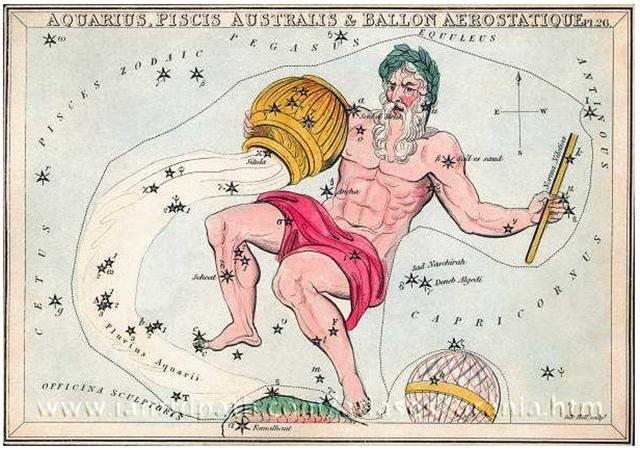
... The
Greek lettered
κ
(Situla) is at the rim
of the Urn, not at the
top of the Nilometer,
where instead there is a
Latin letter k. The
meaning obviously is for
the viewer to connect k
with κ,
to imagine the Rod
inserted into the Urn
(Tent) at the K position
... |
|
Poike
MAO.
poike 'place
aloft'. Barthel 2. |
|
JUNE 28 |
29 (180) |
SIRIUS |
JULY 1 (*102) |
 |
 |
 |
 |
|
Ga4-16 |
Ga4-17 (100) |
Ga4-18 |
Ga4-19 |
|
ν Hydrae (163.1) |
no star listed
(164)
ALTAIR (α
Aquilae)
|
Wings-27 (Snake)
η Oct. (165.4),
ALKES = α
Crateris
(165.6)
*124 = *165.4 -
*41.4 |
ANA-TIPU-4
(Upper-side-pillar
- where the
guards stood)
MERAK (Loin) = β
Ursae Majoris
(166.2),
DUBHE (Bear) = α
Ursae Majoris
(166.7) |
|
Aug 31 |
Sept 1 |
2 (*165) |
3 (246) |
|
°Aug 27 |
28 |
29 (*161) |
30 (242) |
|
'Aug 4 (216) |
5 (*137) |
6 |
7 |
|
"July 21 |
22 / 7 |
23 (204) |
Anakena 24
HANGA HOONU
(5
days) |
|
They came down
from the height,
from the
mountain, from
Pua Katiki,
and reached
Maunga Teatea.
They looked
around and gave
the name
Maunga Teatea A
Hau Maka.
They all
descended, they
all came down
from Pua
Katiki. They
reached
Mahatua, saw
it, looked
around, and gave
the name
Mahatua A Hau
Maka. Then
they went on and
came to
Taharoa.
They saw it,
looked around,
and gave the
name Taharoa
A Hau Maka.
Again they went
on and reached
Hanga Hoonu.
They saw it,
looked around,
and gave the
name Hanga
Hoonu A Hau Maka
... |
|
CLOSE TO THE
FULL MOON: |
|
DEC 28 |
29 |
30 (364) |
31 (*285) |
|
Maunga Teatea |
Mahatua |
Taharoa |
HANGA HOONU |
|
...
Everywhere
the dream
soul looked
around for a
residence
for the
king. The
dream soul
went to
Maunga
Teatea
and gave him
the name 'Maunga
Teatea A Hau
Maka O Hiva'.
The dream
soul of
Hau Maka
looked
around. From
Maunga
Teatea
she looked
to Rangi
Meamea
(i.e.,
Ovahe).
The dream
soul spoke
the
following:
'There it is
- ho! - the
place - ho!
- for the
king - ho! -
to live
(there in
the future),
for this is
(indeed)
Rangi Meamea.'
The dream
soul
descended
and came to
Mahatua.
She named
the place 'Mahatua
A Hau Maka O
Hiva'.
The dream soul continued to look
around for a residence for the
king. Having reached Taharoa
she named the place 'Taharoa
A Hau Maka O Hiva'. The
dream soul moved along and
reached Hanga Hoonu. She
named the place 'Hanga Hoonu
A Hau Maka O Hiva'.
On the same
day, when they
had reached the
Bay of Turtles,
they made camp
and rested. They
all saw the fish
that were there,
that were
present in large
numbers - Ah!
Then they all
went into the
water, moved
toward the
shore, and threw
the fish (with
their hands)
onto the dry
land. There were
great numbers (?
ka-mea-ro)
of fish. There
were tutuhi,
paparava,
and tahe mata
pukupuku.
Those were the
three kinds of
fish. After they
had thrown the
fish on the
beach, Ira
said, 'Make a
fire and prepare
the fish!' When
he saw that
there was no
fire, Ira
said, 'One of
you go and bring
the fire from
Hanga Te
Pau!' One of
the young men
went to the
fire, took the
fire and
provisions (from
the boat),
turned around,
and went back to
Hanga Hoonu.
When he arrived
there, he sat
down. They
prepared the
fish in the fire
on the flat
rocks, cooked
them, and ate
until they were
completely
satisfied. Then
they gave the
name 'The rock,
where (the fish)
were prepared in
the fire with
makoi (fruit
of Thespesia
populnea?)
belongs to
Ira' (Te
Papa Tunu Makoi
A Ira). They
remained in
Hanga Hoonu
for five days
...
|
|
ι Cephei
(346.0), λ
Aquarii, γ
Piscis Austrini,
σ Pegasi (346.5) |
SCHEAT AQUARII =
δ Aquarii
(347.0), ρ
Pegasi (347.2),
δ Piscis
Austrini
(347.4),
FOMALHAUT (Mouth
of the Fish) = α
Piscis Austrini,
τ Gruis (347.8)
*306 = *347.4 -
*41.4 |
FUM AL SAMAKAH
(Mouth of the
Fish) = β
Piscium
(348.3), ζ Gruis
(348.5), ο
Andromedae
(348.9) |
Al Fargh al
Mukdim-24 (Fore
Spout) /
Purva
Bhādrapadā-26
(First of the
Blessed Feet) /
House-13 (Pig)
SCHEAT PEGASI =
β Pegasi,
π Piscis
Austrini
(349.3), κ Gruis
(349.4),
MARKAB PEGASI =
α Pegasi
(349.5)
*308 = *349.4 -
*41.4 |
|
March 2 |
3 |
4 (*348) |
5 (64) |
|
°Febr 26 |
27 |
28 (*344) |
°March 1 (60) |
|
'Febr 3 |
4 |
5 (36) |
6 (*322) |
|
"Jan 20 |
21 |
22 |
23 (*308) |
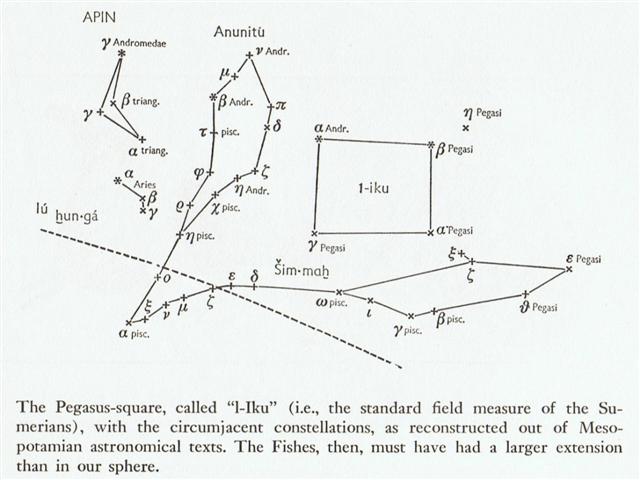 |
|
JULY 2 |
3 (*104) |
4 (185) |
 |
 |
 |
|
Ga4-20 |
Ga4-21 (104) |
Ga4-22 |
|
11h
(167.4 = 126.0 +
41.4)
χ Leonis,
χ¹ Hydrae
(167.1),
χ² Hydrae
(167.3) |
AL SHARAS
(The Ribs) = β
Crateris
(168.6) |
Al
Zubrah-9 (Mane) /
Purva
Phalguni-11
(First Reddish
One - Fig Tree)
ZOSMA
(Girdle, not
Belt)
= δ Leonis
(169.2),
COXA
(Hips) = θ Leonis
(169.4)
*169.4 - *41.4 =
*128.0
|
|
... God created
Eve from one of
Adam's ribs and
therefore I at
first tried to
translate the
female (β)
star Al
Sharas with
The Rib.
Although
according to
Allen this star
was plural: '...
β
... was one of
Al Tizini's
Al Sharāsīf,
the Ribs, - i.e.
of the Hydra, -
and the first of
the set.' Adam
had, as I
remember it,
another wife
before Eve, viz.
Lilith
... |
|
... Dante kept
to the tradition
of the whirlpool
as a significant
end for great
figures, even if
here it comes
ordained by
Providence.
Ulysses has
sailed in his
'mad venture'
beyond the
limits of the
world, and once
he has crossed
the ocean he
sees a mountain
looming far
away, 'hazy with
the distance,
and so high I
had never seen
any.' It is the
Mount of
Purgatory,
forbidden to
mortals. 'We
rejoiced, and
soon it turned
to tears, for
from the new
land a whirl was
born, which
smote our ship
from the side.
Three times it
caused it to
revolve with all
the waters, on
the forth to
lift its stern
on high, and the
prow to go down,
as Someone
willed, until
the
sea had closed
over us.' The
'many thoughted'
Ulysses is on
his way to
immortality,
even if it has
to be Hell. The
engulfing
whirlpool
belongs to the
stock-in-trade
of ancient
fable. It
appears in the
Odyssey as
Charybdis in the
straits of
Messina - and
again, in other
cultures, in the
Indian Ocean and
in the Pacific.
It is found
there too,
curiously
enough, with the
overhanging fig
tree to whose
boughs the hero
can cling as the
ship goes down,
whether it be
Satyavrata
in India, or
Kae in Tonga
...
 |
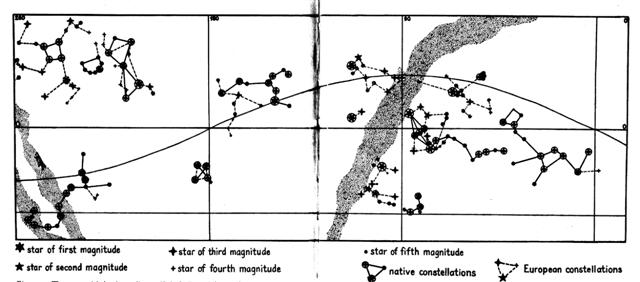 |
|
... There were
80 days from
Zosma (the
girdle of the
Lion) and
Coxa (his
hips) to
Antares. I.e.,
the distance
from "July 27
(208) to 288
("October 15,
Tagaroa Uri 15)
corresponded to
the distance
from January 1
to 0h (the
Gregorian
equinox).
However,
according to
Manuscript E the
Sun king left
his old homeland
in Hora Nui 2,
which should
have
corresponded to
"September 2
rather than to
"July 27 (Anakena
27).
... Hotu's
canoe sailed
from Maori
to Te Pito O
Te Kainga.
It sailed on the
second day of
September (hora
nui) ...
245 ("September
2) - 208 ("July
27) = 37 days =
41 - 4, i.e.
according to the
Gregorian
calendar the Sun
would reach
°September 2
(245) when the
precessional
distance down to
the time of
Bharani was *41
- 4 = 37 days.
Manuscript E
seems here to
have documented
that the Sun
calendar (the
Gregorian
calendar) should
be used only up
to Zosma
and Coxa.
Or that the
Gregorian
calendar was
used in
Hiva. |
|
Sept 4 |
5 (248 = 104 +
144) |
6 |
|
°Aug 31 |
°Sept 1
(244) |
Hora Nui 2 |
|
'Aug 8 (*140) |
9 |
10 (222) |
|
"July 25 |
26 |
27 (*128) |
|
CLOSE TO THE
FULL MOON: |
|
JAN 1 |
2 |
3 (368) |
|
RANGI MEAMEA |
Peke Tau O Hiti |
Maunga Hau
Epa |
|
... The dream
soul came to
Rangi Meamea
and looked
around
searchingly. The
dream soul
spoke: 'Here at
last is level
land where the
king can live.'
She named the
place Rangi
Meamea A Hau
Maka O Hiva.
The mountain she
named Peke
Tau O Hiti A Hau
Maka O Hiva.
The dream soul
moved along a
curve from
Peke Tau O Hiti
to the mountain
Hau Epa [Maunga
Auhepa],
which she named
Maunga Hau
Epa A Hau Maka O
Hiva.
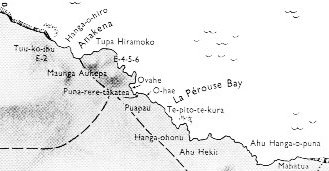
The dream soul
went to the
other side of
the mountain
Hau Epa. As
soon as the
dream soul
looked around,
she saw the sand
(beach), which
was very white
and light. |
|
23h (350.0)
υ, θ Gruis
(350.0), π
Cephei (350.6),
ι Gruis (350.9) |
SIMMAH = γ
Piscium
(351.7) |
φ Aquarii
(352.0),
ψ Aquarii
(352.4),
χ Aquarii
(352.6), γ
Tucanae, φ Gruis
(352.8)
*352.4 - *41.4 =
*311.0
|
|
March 6 (*350) |
7 (66) |
8 (432) |
|
°March 2
(*346) |
3 |
4 (63) |
|
'Febr 7 |
8 (*324) |
9 (40) |
|
"Jan 24 |
25 (*310) |
26 |
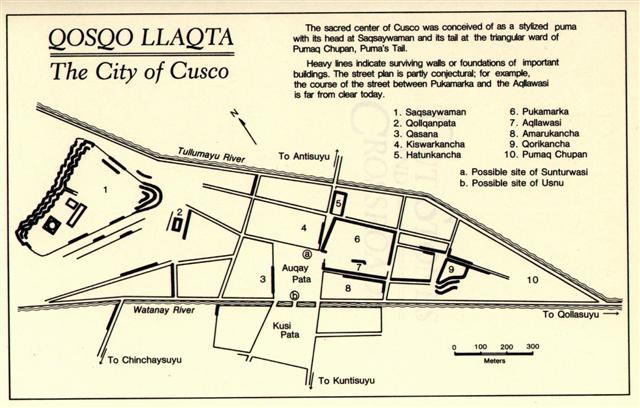
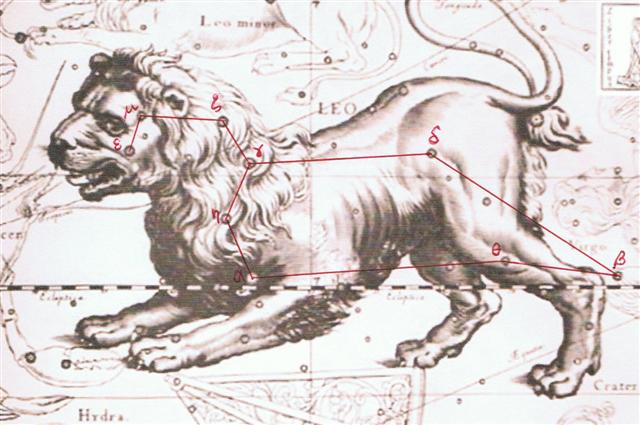

Evidently the Southern
Cross (similar to the
Corvus constellation
according to people in
South America) was
perceived as a kind of
Fig Tree - such were
always bearing at least
some ripe fruits
(off-spring, hua)
I have heard.
... the bird, being sent
with a cup for water,
loitered at a fig-tree
till the fruit became
ripe, and then returned
to the god with a
water-snake in his claws
and a lie in his mouth,
alleging the snake to
have been the cause of
the delay. In punishment
he was forever fixed in
the sky with the Cup and
the Snake; and, we may
infer, doomed to
everlasting thirst by
the guardianship of the
Hydra over the Cup and
its contents. From all
this came other poetical
names for our Corvus -
Avis
Ficarius, the Fig
Bird; and Emansor,
one who stays beyond his
time; and a belief, in
early folk-lore, that
this alone among birds
did not carry water to
its young
...
Hua Reva came
immediately after
Te Pou.
The fruit never falls
far from the tree.
|
Reva.
To hang down;
flag, banner.
Revareva, 1.
To be hanging
vertically; to
detach oneself
from the
background of
the landscape,
such a person
standing on top
of a hill:
ku-revareva-á te
tagata i ruga i
te maúga. 2.
To cast itself,
to project
itself (of
shadows);
revareva-á te
kohu o te miro i
te maeha o te
mahina, the
shadow of the
tree casts
itself in the
light of the
moon. 3. Uvula.
Vanaga. To hang,
to suspend,
flag, banner;
hakareva, to
hang up;
hakarereva,
to hang up, to
balance;
hakarevareva,
to wave. T Pau.:
reva, a
flag;
fakarevareva,
to hang up, to
suspend. Mgv.:
reva, a
flag, a signal.
Mq.: éva,
to hang up, to
be suspended, to
wave a signal.
Ta.: reva,
a flag, banner;
revareva,
to wave. The
germ sense is
that of being
suspended ...
any light object
hung up in the
island air under
the steady
tradewind will
flutter;
therefore the
specification
involved in the
wave sense is no
more than normal
observation.
Churchill. Mgv.:
1. A plant. Ta.:
reva, id.
Mq.: eva,
id. Sa.: leva,
id. Ma.:
rewa-rewa,
id. 2. To cross,
to pass across
quickly;
revaga,
departure. Ta.:
reva, to
go away, to
depart. Ma.:
reva, to get
under way.
Churchill. Ta.:
The firmanent,
atmosphere. Ha.:
lewa, the
upper regions of
the air,
atmosphere, the
visible heavens.
Churchill. |
|
LEWA,
s. Haw., the
upper air,
region of
clouds; v.
to swing, float
in the air, move
back and forth;
hoo-lewa,
to vibrate,
float in the
air, carry
between two
persons, as a
corpse, a
funeral. Tah.,
rewa, the
firmanent, an
abyss;
rewa-rewa,
to fly about, as
a flag. Mangr.,
rewa, the
overhanging
firmanent, a
tent, a flag. N.
Zeal., rewa,
the eyelid.
Marqu., ewa,
to suspend; s.
the middle.
Sam., leva
(of time), long
since; v.
be protracted.
Fiji., rewa,
high, height;
vaka-rewa,
to lift up, to
hoist, as a
sail. Malg.,
lifa, v.
to fan oneself,
s.
flight;
rafraf, a
fan. Goth.,
luftus, the
air. Sax.,
lyfti, air,
arch, vault. O.
Engl., lift,
air. Lat.,
limbus (?),
fringe, flounce.
Sanskr., dev,
div,
primarily
'jacere,
jaculare',
according to A.
Pictet (Orig.
Ind.-Eur., ii.
466),
subsequently 'to
play at dice',
play generally.
The permutation
of d and
l may be
observed in the
Latin levir,
brother-in-law
(the husband's
younger brother)
= Sanskr.
devŗi,
devara,
id.
If
dev
or
div
has derived the
sense of
'throwing dice'
from an older
sense 'jacere,
jaculare', to
throw, to hurl,
that sense may
be a derivative
from a still
older one, 'to
lift up, swing
about, be
suspended' = the
Polynesian
lewa,
rewa,
'to be
suspended, to
vibrate'. And
thus we can also
understand the
origin of the
Goth.
luftus,
the Sax.
lyfte,
the O. Norse
loft,
Swed.
lowera,
lofwa,
Engl.
luff.
(Fornander) |
|
... Another year
passed, and a
man by the name
of Ure Honu
went to work in
his banana
plantation. He
went and came to
the last part,
to the 'head'
(i.e., the upper
part of the
banana
plantation), to
the end of the
banana
plantation. The
sun was standing
just right for
Ure Honu
to clean out the
weeds from the
banana
plantation. On
the first day he
hoed the weeds.
That went on all
day, and then
evening came.
Suddenly a rat
came from the
middle of the
banana
plantation.
Ure Honu saw
it and ran after
it. But it
disappeared and
he could not
catch it. On the
second day of
hoeing, the same
thing happened
with the rat. It
ran away, and he
could not catch
it. On the third
day, he reached
the 'head' of
the bananas and
finished the
work in the
plantation.
Again the rat
ran away, and
Ure Honu
followed it. It
ran and slipped
into the hole of
a stone. He
poked after it,
lifted up the
stone, and saw
that the skull
was (in the
hole) of the
stone. (The rat
was) a spirit of
the skull (he
kuhane o te
puoko).
Ure Honu was
amazed and said,
'How beautiful
you are! In the
head of the new
bananas is a
skull, painted
with yellow root
and with a strip
of barkcloth
around it.'
Ure Honu
stayed for a
while, (then) he
went away and
covered the roof
of his house in
Vai Matā.
It was a new
house. He took
the very large
skull, which he
had found at the
head of the
banana
plantation, and
hung it up in
the new house.
He tied it up in
the framework of
the roof (hahanga)
and left it
hanging there
...

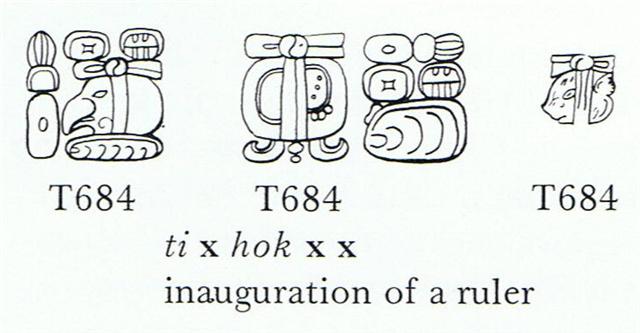 |
The Explorers stayed in
Hanga Hoonu for 5
days from "July 18 to
"July 23, which
possibly indicated a sudden shift
in view from heliacal to
nakshatra resulting in
*290 at JANUARY 5 (370 -
or rather 366 if counted from
3-25):
|
Hanga Takaure
(Cycle
completed)
 |
|
JUNE
19
DEC 19
Hua Reva |
20 (354)
Akahanga |
21 (solstice)
Hatinga Te Koe |
22
Roto Ire Are |
23
Tama |
ST JOHN'S DAY
24
One Tea |
JUNE 25
DEC 25 (84 +
275)
Hanga Takaure |
|
'June
28 |
29 |
30 |
1 |
2 |
3 (84 + 100) |
'July 4 |
|
"July
12 |
13 |
14 |
15 |
16 |
17 |
Anakena 18 |
|
Hua Reva
seems to have
been the place
which the
kuhane
observed close
to the Full moon
(Hotu) in
the night of
JUNE 19, when
the Sun had been
at ζ Leonis
(hidden in the
mane of the
Lion) and the
Full Moon had
been at DECEMBER
19 (353).
...
Zayin
(also
spelled
Zain or
Zayn
or simply
Zay) is
the seventh
letter of
many Semitic
abjads ...
It
represents
the sound
[z].
The
Phoenician
letter
appears to
be named
after a
sword or
other
weapon. (In
Biblical
Hebrew, 'Zayin'
means sword,
and the verb
'Lezayen'
means to
arm. In
modern
Hebrew, 'zayin'
means penis
and 'lezayen'
is a vulgar
term which
generally
means to
perform
sexual
intercourse
and is used
in a similar
fashion to
the English
word fuck,
although the
older
meaning
survives in
'maavak
mezuyan'
(armed
struggle)
and 'beton
mezuyan'
(armed,
i.e.,
reinforced
concrete).
The
Proto-Sinaitic
glyph
according to
Brian
Colless may
have been
called
ziqq,
based on a
hieroglyph
depicting a
'manacle'
...
 |
... Nut, whom the Greeks
sometimes identified
with Rhea, was goddess
of the sky, but it was
debatable if in
historical times she was
the object of a genuine
cult. She was Geb's twin
sister and, it was said,
married him secretly and
against the will of Ra.
Angered, Ra had the
couple brutally
separated by Shu and
afterwards decreed that
Nut could not bear a
child in any given month
of any year. Thoth,
Plutarch tells us,
happily had pity on her.
Playing draughts with
the Moon, he won in the
course of several games
a seventy-second part of
the Moon's light with
which he composed five
new days. As these five
intercalated days did
not belong to the
official Egyptian
calendar of three
hundred and sixty days,
Nut was thus able to
give birth successively
to five children:
Osiris, Haroeris
(Horus), Set, Isis and
Nepthys
...
|
JUNE 25
DEC 25
Hanga
Takaure |
26
Poike |
27
Pua Katiki |
28
Maunga
Teatea |
29
Mahatua |
JUNE 30
(181)
Taharoa |
JULY 1
DEC 31
Hanga Hoonu |
|
'July 4
(185) |
5 |
6 |
7 |
8 |
'July 9
(190) |
10 |
|
Anakena 18 |
19 |
20 |
21 |
22 |
23
(204) |
Anakena
24 |
|
DEC 31 (365) |
JAN 1 |
2 |
3 |
4 |
5 (370 = 181
+ 183 + 6) |
DEC 31 (365)
JULY 1 |
|
5 days
rest in Hanga
Hoonu |
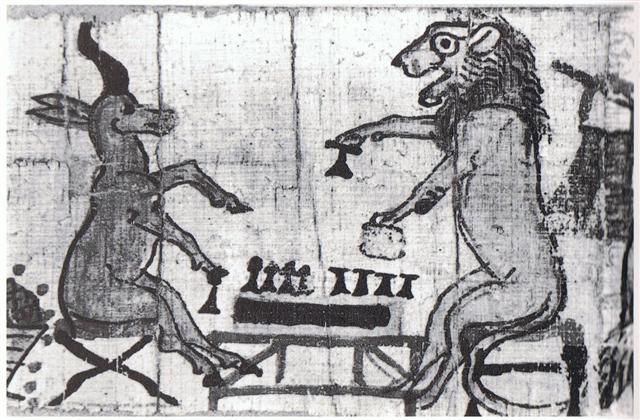
|
JULY 5 |
6 (*107) |
7 |
8 |
9 (190) |
|
...
Midsummer
is the
flowering
season
of the
oak,
which is
the tree
of
endurance
and
triumph,
and like
the ash
is said
to
'court
the
lightning
flash'.
Its
roots
are
believed
to
extend
as deep
underground
as its
branches
rise in
the air
- Virgil
mentions
this -
which
makes it
emblematic
of a god
whose
law runs
both in
Heaven
and in
the
Underworld
...
The
month,
which
takes
its name
from
Juppiter
the
oak-god,
begins
on June
10th and
ends of
July
7th.
Midway
comes
St.
John's
Day,
June
24th,
the day
on which
the
oak-king
was
sacrificially
burned
alive.
The Celtic
year was
divided into
two halves
with the
second half
beginning in
July,
apparently
after a
seven-day
wake, or
funeral
feast, in
the
oak-king's
honour ... |
 |
 |
 |
 |
 |
|
Ga4-23 |
Ga4-24 |
Ga4-25 (108) |
Ga4-26 |
Ga4-27 |
|
φ Leonis
(170.0),
ALULA
(First
Spring of
the Gazelle) = ξ, ν
Ursae
Majoris
(170.5),
LABRUM = δ
Crateris
(170.6) |
σ Leonis
(171.1), λ
Crateris
(171.6), ι
Leonis, ε
Crateris
(171.9) |
γ Crateris,
π Centauri
(172.0), κ
Crateris
(172.5), τ
Leonis
(172.8)
GREDI (α
Capricorni)
|
ο¹ Centauri
(173.8) |
GIAUZAR = λ
Draconis
(174.0), ξ
Hydrae
(174.3), ο²
Centauri, λ
Centauri
(174.8) |
|
... the
first month
of the
Moriori
year, was
named
Rongo (Lono).
On the first
of the new
year the
Moriori
launched a
small canoe
to Rongo,
although
they built
and used
only rude
craft for
their
fishing
excursions.
The canoe
was manned
by twelve
figures
symbolizing
the
personifications
of the
twelve
months ... |
|
Sept 7 |
8 |
9 (*172) |
10 |
11 (254) |
|
°Sept 3 |
4 |
5 (*168) |
6 |
7 (250) |
|
'Aug 11 |
12 (*144) |
13 |
14 |
15 (227) |
|
"July 28 |
29 (*130) |
30 |
31 |
'Aug 1 (213) |
|
CLOSE TO THE FULL MOON: |
|
JAN 4 |
5 (*290) |
6 |
7 (372) |
8 |
|
CROSS-BARS |
ο Gruis,
Snowball
Nebula =
NGC7662
Andromedae
(355.0), τ
Oct. (355.3) |
no star
listed (356) |
ι Phoenicis
(357.3), ι
Piscium
(357.4), λ
Andromedae
(357.9)
*357.4 -*41.4
= *316 |
|
ο Cephei
(353.3),
KERB
(Bucket
Rope) = τ
Pegasi
(353.6) |
κ Piscium
(354.2), θ
Piscium
(354.4), υ
Pegasi
(354.9)
*354.4 -
*41.4 = *313 |
 |
|
March 9 |
10 (*354) |
11 |
12 |
13 (72) |
|
°March 5 |
6 (*350) |
7 |
8 |
9 (68) |
|
'Febr 10
(41) |
11 |
12 |
13 (*329) |
2-14 |
|
"Jan 27 |
28 |
29 (*314) |
30 |
31 |
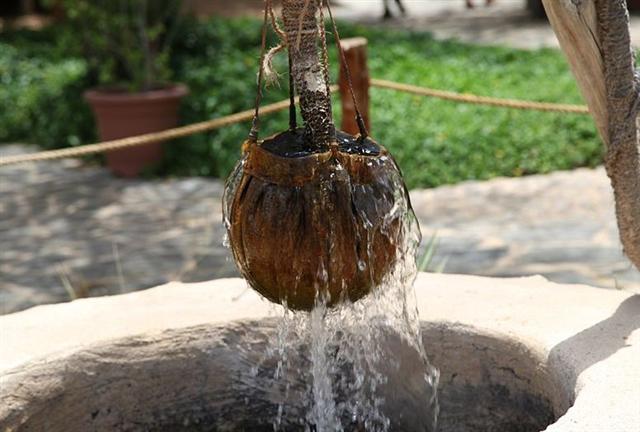
|







































